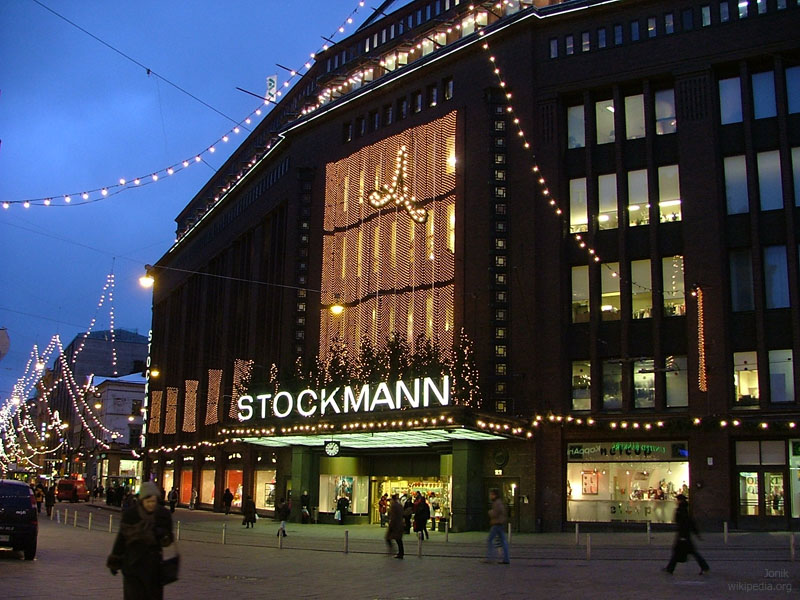Gender-neutral collections for Stockmann were presented by many well-known brands, including Calvin Klein, Kenzo, Burberry, Acne Studios, Marimekko, Makia, R-Collection, Dr.Martens. Stockmann's director of customer relations Anna Salmi noted that the retailer wants to inspire buyers to forget about rules and borders and make purchases without any prejudice.
The idea of gender neutral shopping was waiting for its implementation since 2015, when experts began talking about the trend of transition to the appropriate fashion.
Analyst company NPD in its forecast called this trend one of the most significant in the market. Behind it there is the desire of young people to resist the established norms and the belief that one should not limit oneself to stereotypes in the sphere of consumer goods. NPD analysts advised retailers and manufacturers to take a fresh look at consumers, considering all their variety of tastes.
The new direction has received wide support of the fashion industry. The corresponding collections have appeared in H&M, Zara, Burberry, Alexander Wang, Marc Jacobs, Tom Ford, Gucci, Louis Vuitton, etc. Moreover, there are brands that specialize in gender neutral clothing models, for example 69 Worldwide, Wildfang, Phluid Project, Telfar and others.
Vox magazine notes that the British universal store Selfridges was one of the first to test gender-neutral shopping. It launched the Agender project, giving buyers an opportunity to choose clothes "without limits and stereotypes." Within the framework of the project, which lasted for three months, three floors were decorated in neutral colors, the goods were placed in identical unseparated boxes and were located on standard racks without dividing them into male and female clothes.
Then began to appear small departments or small shops specializing in gender neutral fashion. Some large trading networks from time to time arranged actions related to this trend. For example, the British chain John Lewis a year ago refused to tag on children's clothing, which indicated whether the object is intended for boys or girls. In addition, the chain combined all the children's clothes into one department, so, as John Lewis spokesperson Caroline Bettis explained to The Independent, "not to impose gender stereotypes," but "to provide a wider choice to a wide variety of customers."
Yet, not all British people reacted to innovations of the company positively. For example, TV presenter Piers Morgan wrote on Twitter that "Britain has finally cracked up."
It is quite logical, Vox notes, that it was Finland that became the place where the largest department of gender neutral clothing was opened on a regular basis. Studies show that this country is among the world leaders in terms of gender equality and the number of women in parliament and in ministerial posts (the proportion of women there is 38.5%).
But before the real revolution in the fashion world is still far from being supported by such a large network as Stockmann. Mass fashion is not yet going to part with the division into male and female. When it comes to money, it's hard to say whether brands are really interested in change and recognize gender expression, or whether it's another marketing move, Vox authors ask.
source: vox.com
The idea of gender neutral shopping was waiting for its implementation since 2015, when experts began talking about the trend of transition to the appropriate fashion.
Analyst company NPD in its forecast called this trend one of the most significant in the market. Behind it there is the desire of young people to resist the established norms and the belief that one should not limit oneself to stereotypes in the sphere of consumer goods. NPD analysts advised retailers and manufacturers to take a fresh look at consumers, considering all their variety of tastes.
The new direction has received wide support of the fashion industry. The corresponding collections have appeared in H&M, Zara, Burberry, Alexander Wang, Marc Jacobs, Tom Ford, Gucci, Louis Vuitton, etc. Moreover, there are brands that specialize in gender neutral clothing models, for example 69 Worldwide, Wildfang, Phluid Project, Telfar and others.
Vox magazine notes that the British universal store Selfridges was one of the first to test gender-neutral shopping. It launched the Agender project, giving buyers an opportunity to choose clothes "without limits and stereotypes." Within the framework of the project, which lasted for three months, three floors were decorated in neutral colors, the goods were placed in identical unseparated boxes and were located on standard racks without dividing them into male and female clothes.
Then began to appear small departments or small shops specializing in gender neutral fashion. Some large trading networks from time to time arranged actions related to this trend. For example, the British chain John Lewis a year ago refused to tag on children's clothing, which indicated whether the object is intended for boys or girls. In addition, the chain combined all the children's clothes into one department, so, as John Lewis spokesperson Caroline Bettis explained to The Independent, "not to impose gender stereotypes," but "to provide a wider choice to a wide variety of customers."
Yet, not all British people reacted to innovations of the company positively. For example, TV presenter Piers Morgan wrote on Twitter that "Britain has finally cracked up."
It is quite logical, Vox notes, that it was Finland that became the place where the largest department of gender neutral clothing was opened on a regular basis. Studies show that this country is among the world leaders in terms of gender equality and the number of women in parliament and in ministerial posts (the proportion of women there is 38.5%).
But before the real revolution in the fashion world is still far from being supported by such a large network as Stockmann. Mass fashion is not yet going to part with the division into male and female. When it comes to money, it's hard to say whether brands are really interested in change and recognize gender expression, or whether it's another marketing move, Vox authors ask.
source: vox.com





